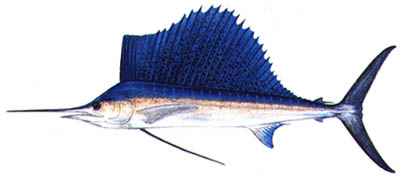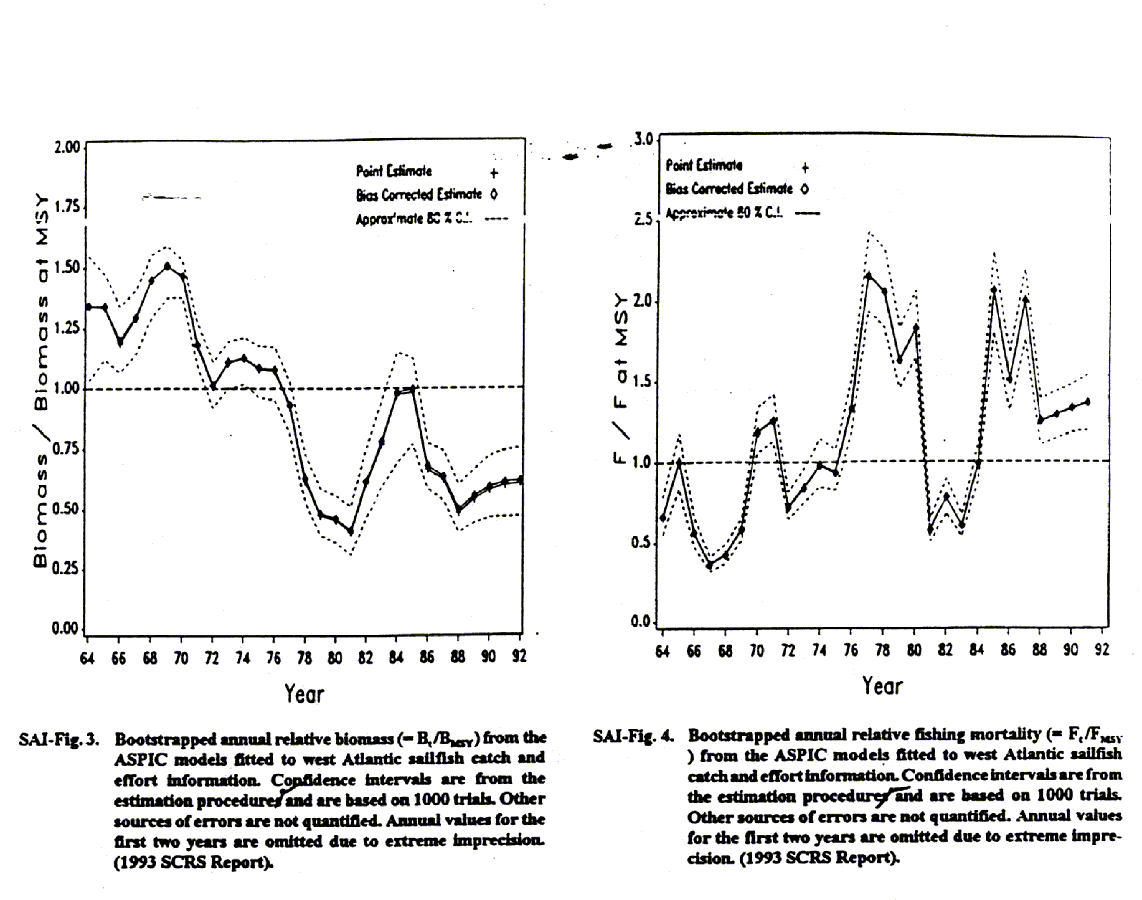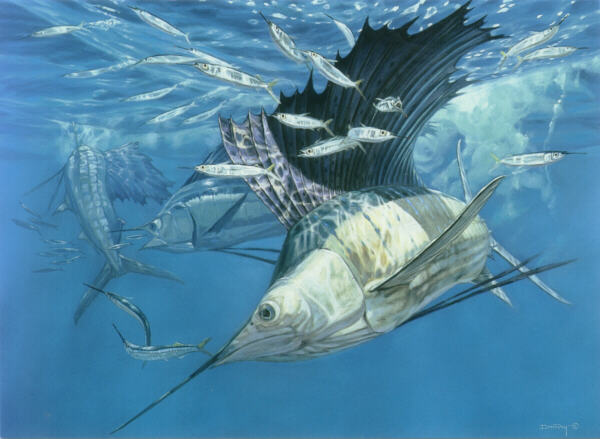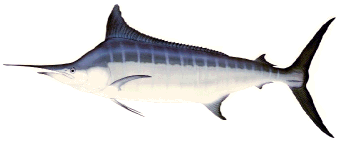
and its Causes

As abundance declines and reaches 50 percent of its MSY level, it passes what is considered the threshold into "recruitment overfishing."� This means there are fewer and fewer adults remaining alive each year and the population is increasingly unable to sustain itself.� Eventually, a point is reached at which there are so few adults remaining alive that they just can't find each other at spawning time in such a vast ocean.� From that point on, even if all fishing were to be halted, the population can not forstall its own slide into extinction.� Unfortunately, we have no idea where that "point of no return" lies, and the only real way to find out is unacceptable.�
If the commercial fleets were targeting sailfish, as their abundance declined, so too would their catches.� Eventually, fishing on them would be abandoned as unprofitable before the population ever reached the "point of no return."� But the fleets are targeting other much more valuable species.� Their catch and kill of billfish (including blue and white marlin) will continue until the target swordfish and tunas are no longer profitable.� Swordfish and some of the targeted tunas are much more numerous and their populations are closer to their MSY biomass levels.� Yellowfin tuna could be fished quite heavily for quite some time.� But billfish stocks (particularly blue and white marlin) are already on the verge of slipping into extinction. They will not be able to withstand the continuing fishing mortality they have been experiencing by commercial fleets targeting other species.� (Be sure to see the section of this website titled Severity of Atlantic Population Declines and visit the site focused on both Atlantic marlins using the links below.)�� For sailfish, we just have no scientific information on their population status since no stock assessment has been conducted by ICCAT since 1992.
As depicted in the figure above (right), fishing mortality (fishing pressure) has remained well above that which would allow for the MSY, ranging from 1.3 to 2.1 times the level that this stock could tolerate on a sustainable basis.� However, we simply have no information on the stock's abundance or fishing pressure on it since 1991.
To conserve these dwindling stocks, U.S. recreational fishermen voluntarily release over 95 percent of all billfish they catch.�� The commercial fishing sector is the problem.� Longlines are responsible for 99 percent of the kill caused by U.S. vessels with anglers responsible for the remainder.�
Maps showing the locations of where most sailfish are caught by U.S. longline vessels (i.e., their primary spawning sites and feeding areas) can be found by clicking HERE.

Severity of Atlantic Population Declines
The Facts - Headed for Extinction
Blue and White Marlin
Swordfish
Bluefin Tuna
Large Sharks
Daily "Kill-o-Meter"
Maps of Key Spawning and Feeding Areas
Blue Marlin
White Marlin
Sailfish
Swordfish
Bluefin Tuna
N. Atlantic Currents
Congress' Longline Closure Bills
Will They Work?
Chambers and Associates
Overview
List of All Pages on the Website
Home
Index
Atlantic Blue Marlin - 3 pages
ARTICLES on BIG GAME FISH and FISHING
Overview and List

9814 Kensington Parkway
Kensington, Maryland 20895-3425
(T) (301) 949-7778��� (Fax) (301) 949-3003